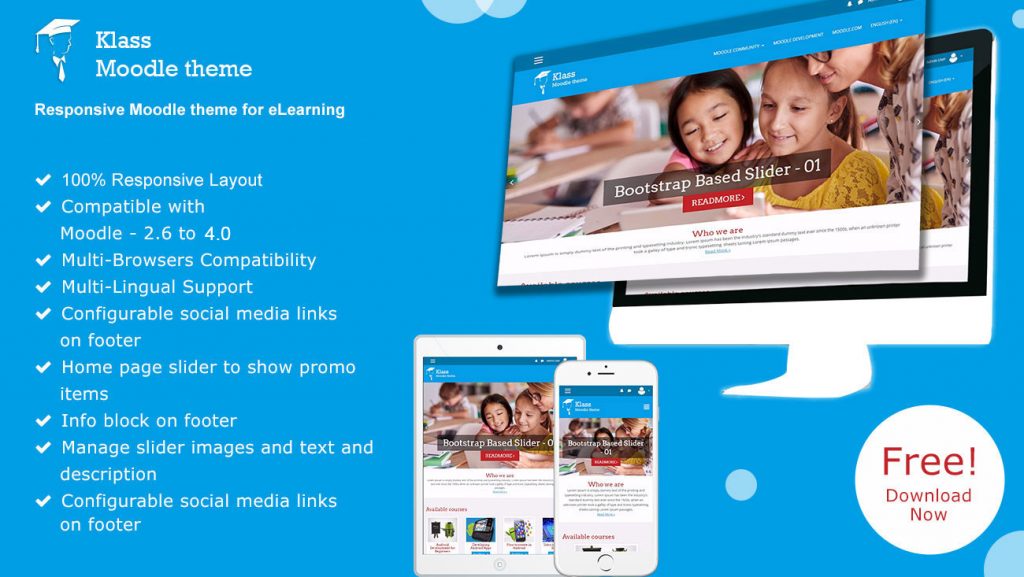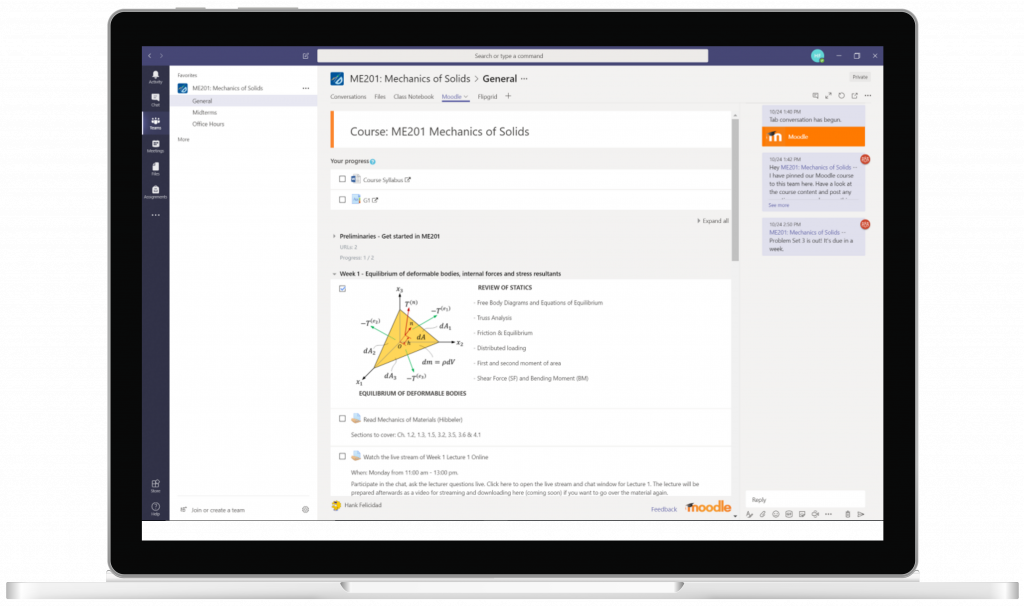For many years Moodle has been a standard LMS in the education industry. My own Moodle experience began with the delivery of online learning in 2020 with a custom implementation of Moodle called OpenLMS.
For Mobile, Moodle provides apps on both the Apple and Google App Stores. The apps are an excellent way to interact with a course on the go, but can be difficult to navigate, and do not have all features available for all roles. For example, it may be possible to access through the app as a student, but not as a teacher.
Moodle uses “themes” to govern the appearance of the websites, with “Boost” being the default theme. Unfortunately, boost is not especially well set up for mobile internet. Moodle allows for plug-ins to modify the appearance of courses, some of which are designed to distinguish between desktop and mobile browsers. Many different themes can be applied, but will require the site admin in order to install. Below is an example of the theme “Klass,” which is able to distinguish between browsers. https://moodle.org/plugins/browse.php?list=category&id=3

Interestingly, there is also a theme for integration into Microsoft Teams. This appears to allow for a more seamless look when placing Moodle courses in a Teams environment. With the excellent communication features that Teams leverages, being able to integrate Moodle content could be a great advantage to some teachers and schools.

Using appropriate themes or apps could greatly simplify the use of LMS’s for both teachers and students, but would certainly require an investment in time and effort from both leadership and network administration.
I find that while Google Classroom is easier to use, has a much easier user interface, it lacks some of the functionality and features that Moodle contains, like the forum, or the tests and quizzes. I use Moodle for some of my classes and Google Classroom for others. Luckily, our district has it’s own Moodle through our distance learning centre, so it is also used for distance education. I really like the Moodle site for the academic integrity that it can provide, despite the huge learning curve in creating a classroom. I really like both of those platforms, but for different uses.
Like Noor, I’ve not built a course inside of a Moodle platform in the past 13 years. The last I used it, it was simple and (of course) really the best option at the time for a no-budget way to help students who needed other ways to connect to learning. Now, I see the huge leaps made by new companies, and applaud Moodle for staying current and accessible – in ways that LMS systems like Canvas are not.
Thank you for sharing this, Douglas!
Hi,
When I was at the university in 2008, We started using Moodle for discussions, assignments and Quizzes. It has greatly changed from that time. Thank you for the updates.